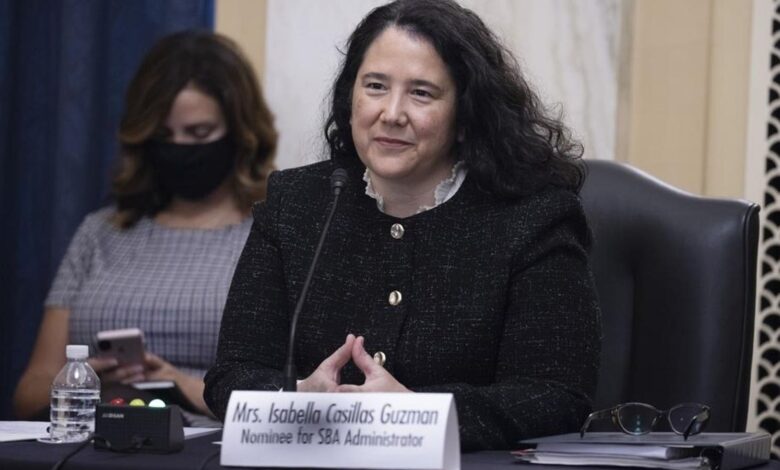SBA Substantially Increases PPP Loan Amount Eligibility For New Schedule C Borrowers

If you’re a sole proprietor or owner of a very small business, how you calculate the amount you can borrow through the Paycheck Protection Program (PPP) just got a lot better. Yesterday evening, the SBA released additional guidance on the Biden-Harris Administration’s PPP revamp. Now, an Interim Final Rule (IFR) clarifies that Schedule C filers can use gross income rather than net, as previously specified. They also released new applications for First-Draw Borrowers and Second-Draw Borrowers Here’s a closer look at what’s new.
The updated calculation
You may have read about sole proprietors getting loans of only a few dollars in the first round of PPP financing. It was hardly worth the trouble of applying. The interim final rule fixes that by allowing individuals who file an IRS Form Schedule C to calculate their maximum loan amount using gross income. In the IFR, the SBA says that support for employment for sole proprietors includes covering business expenses as well as net profits. It added, “this change would affect many sole proprietors who have been effectively excluded from PPP, especially those with very little or negative net profit, many of which are located in underserved communities.” SBA Data shows that firms with no employees are 70 percent owned by women and minorities, compared to 40 percent for businesses with employees.
It’s also worth noting that the IFR changed eligibility rules to allow more small business owners to apply. Now entrepreneurs with prior non-fraud felony convictions or who are delinquent or in default on federal student loan payments can take advantage of PPP financing.
Calculating the amount
How much can you borrow under the new rules? Start with the gross income you report on Line 7 of your Schedule C. If you have no employees, you simply put your gross income from Line 7 on your Schedule C, divide that number by 12, if that number exceeds $8,333.33 then put $8,333.33 and then multiply that amount by 2.5 to get your loan amount.
SBA Form 2483-C
SBA
If you have employees, you take the gross income amount of line 7 and then subtract the sum of line 14 (employee benefits programs), line 19 (pension or profit-sharing plans) and line 26 (wages). That number is divided by 12. If it’s more than $8,333.33 then you put $8,333.33. Then you calculate the average monthly payroll for employees excluding owners, add them together and then multiply by 2.5.
SBA Form 2483-C
SBA
Note that if you’re a qualified joint venture for federal income tax purposes — that is, you and your spouse are married, file a schedule C, both materially participate in the trade of business and elect not to be treated as a partnership — only one spouse may submit the form on behalf of the qualified joint venture. When you report the number of employees, you should count both spouses. But for purposes of determining which table to use to calculate Loan Request Amount, if you have no employees other than you and your spouse, you complete the table labeled “If you do not have any employees other than yourself, complete this table.” For purposes of calculating gross income, enter the sum of gross income (Schedule C, line 7) from both spouses.
The total amount of the loan that covers owner compensation still won’t exceed $20,833, the maximum amount of the loan for borrowers before. The maximum amount of the loan also includes Economic Injury Disaster Loans made between January 31, 2020 and April 3, 2020 (excluding the EIDL advance).
For forgiveness purposes, payroll costs refers to “proprietor expenses” which includes the owner business expenses and own compensation, but not employee payroll costs (i.e., employee benefits programs, pension and profit-sharing plans and employee wages). You must still verify what the loan funds will be used for.
SBA Form 2483-C
SBA
Documentation needed with the loan
To substantiate the loan amount requested you must provide:
- A copy of your 2019 or 2020 schedule C
- 2019 1099-Misc received for box 7 or 2020 1099-NEC received for box 7
- Invoice, bank statement or a book of records that establishes you are self-employed.
- If you have employees, Form 941 (or equivalent payment processor records and state quarterly wage unemployment tax forms (or equivalent payment processor records)
- A 2020 invoice, bank statement of book of record to establish you were in operation on or around February 15, 2020.
Words of caution
One of the big questions regarding the changes that were coming was whether the changes would be retroactive. Many Schedule C filers have already applied for loans. The SBA has made clear the change only applies to loans that are approved after the effective date of the IFR (March 3, 2021) and that loans already approved as of the effective date cannot increase the loan amount based on the new calculation methodology.
Additionally, you still have to make 10 certifications about the loan, including certifying “Current economic uncertainty makes this loan request necessary to support the ongoing operations of the Applicant.” With the change in calculation and the substantial increase loan amounts, the SBA hopes to mitigate the risk of fraud by reviewing a sample of the population of first-draw PPP loans made to Schedule C filers seeking loans with over $150,000 in gross income. The review will assess whether these borrowers complied with the PPP eligibility criteria, including the good faith loan necessity certification.
The new rules are definitely good news for those who have not borrowed for the first or second time yet. However, since we’re already in the final three weeks of the latest PPP round, it will likely have limited impact. A lot of businesses have already applied. As of February 28th, the program has approved over 2.1 Million loans in 2021 and over 7.3 Million loans overall. Also, as always, banks will have to implement these changes quickly, and many were already closing application deadlines early. That seems even more problematic. The American Institute of CPAs (AICPA) has asked Congress for at least 60 more days for loans, but that has not been addressed at this point. Stay tuned.
Follow me on Twitter or LinkedIn. Check out my website.




